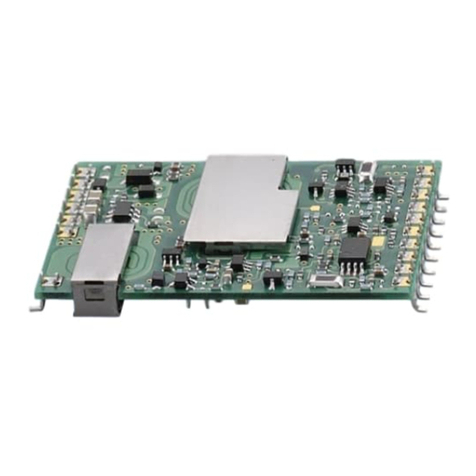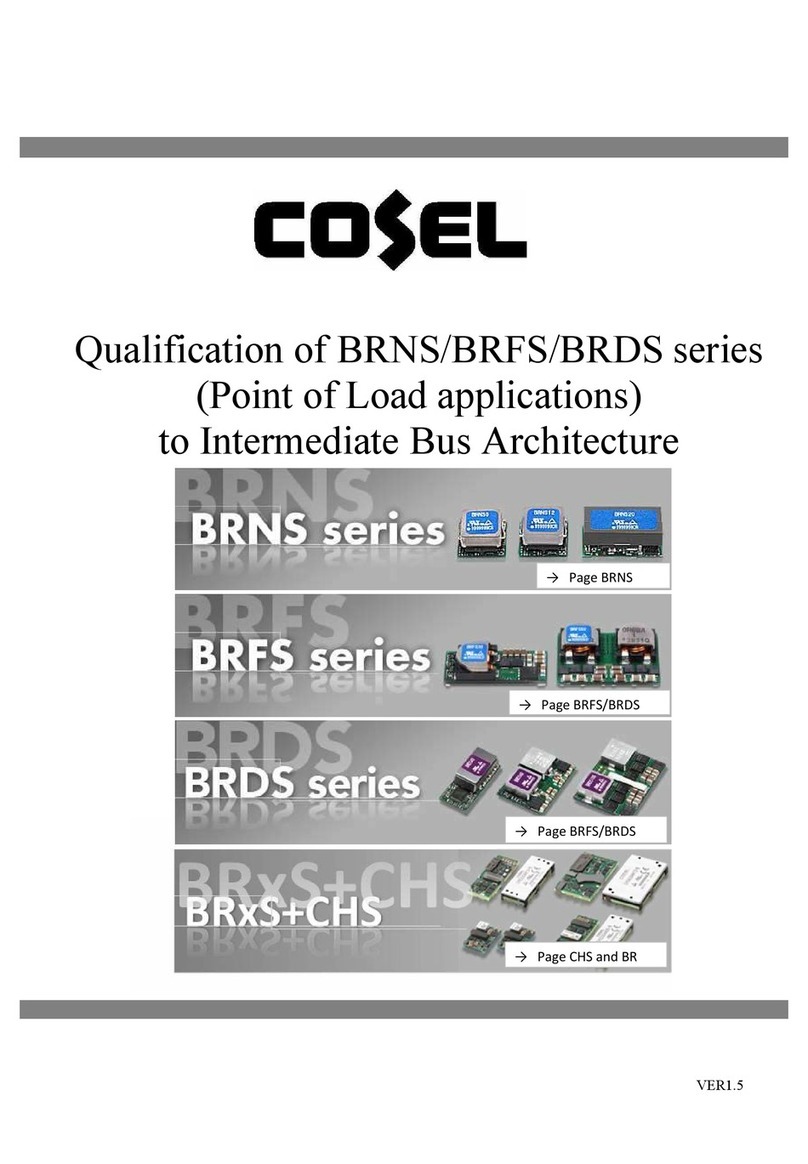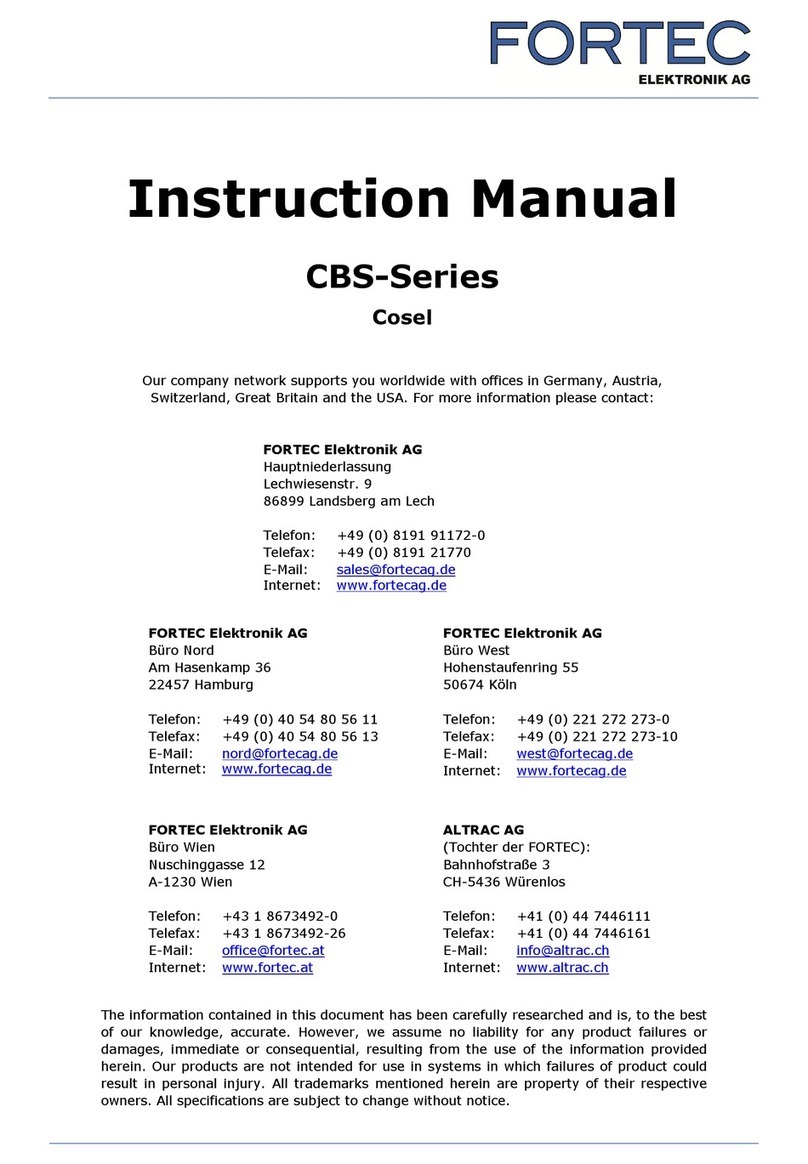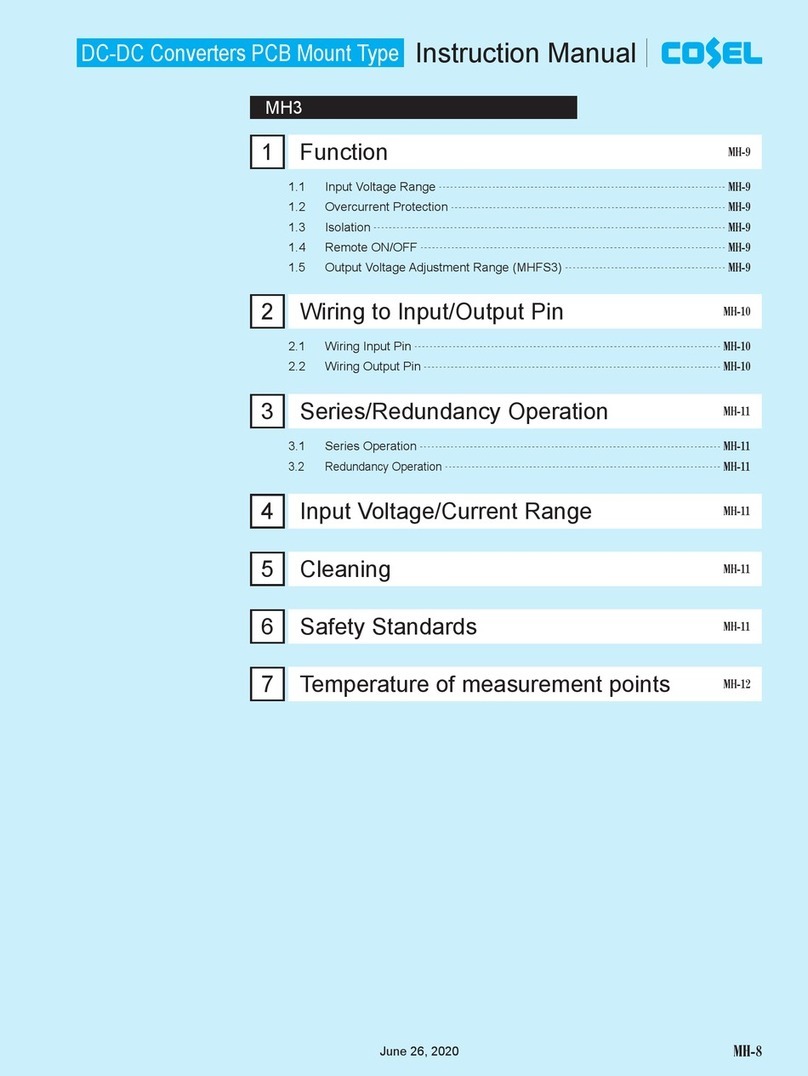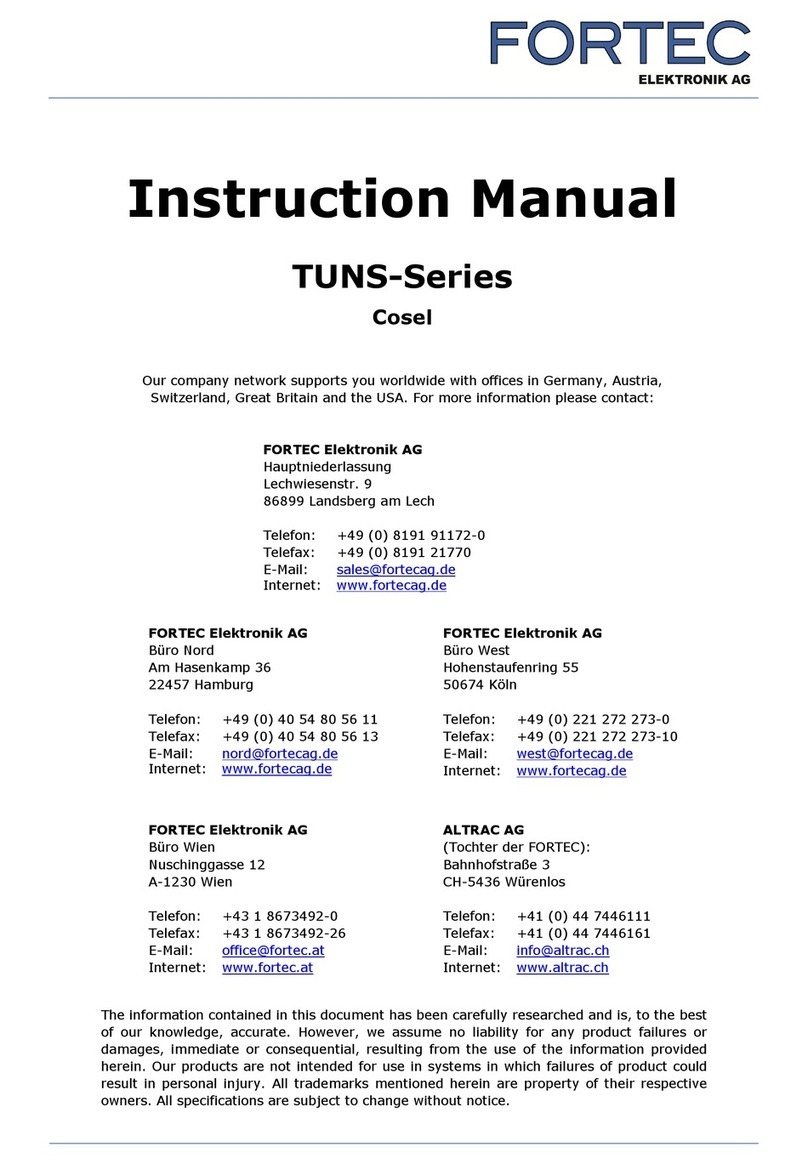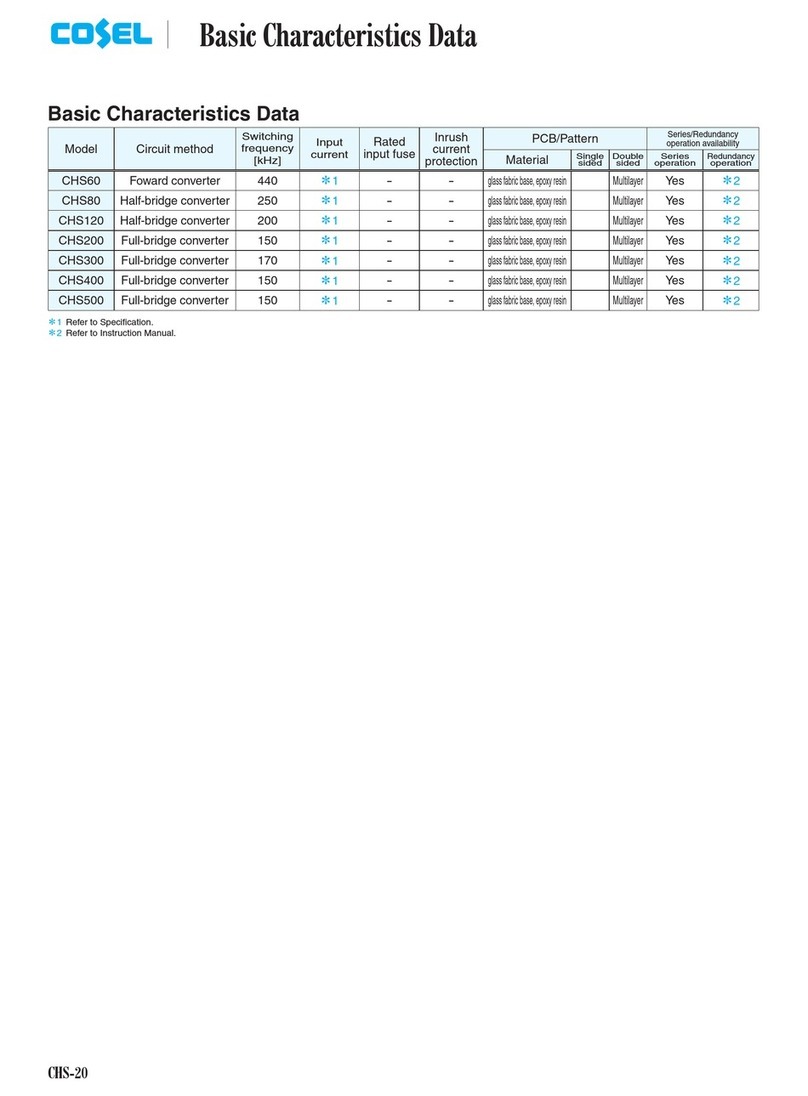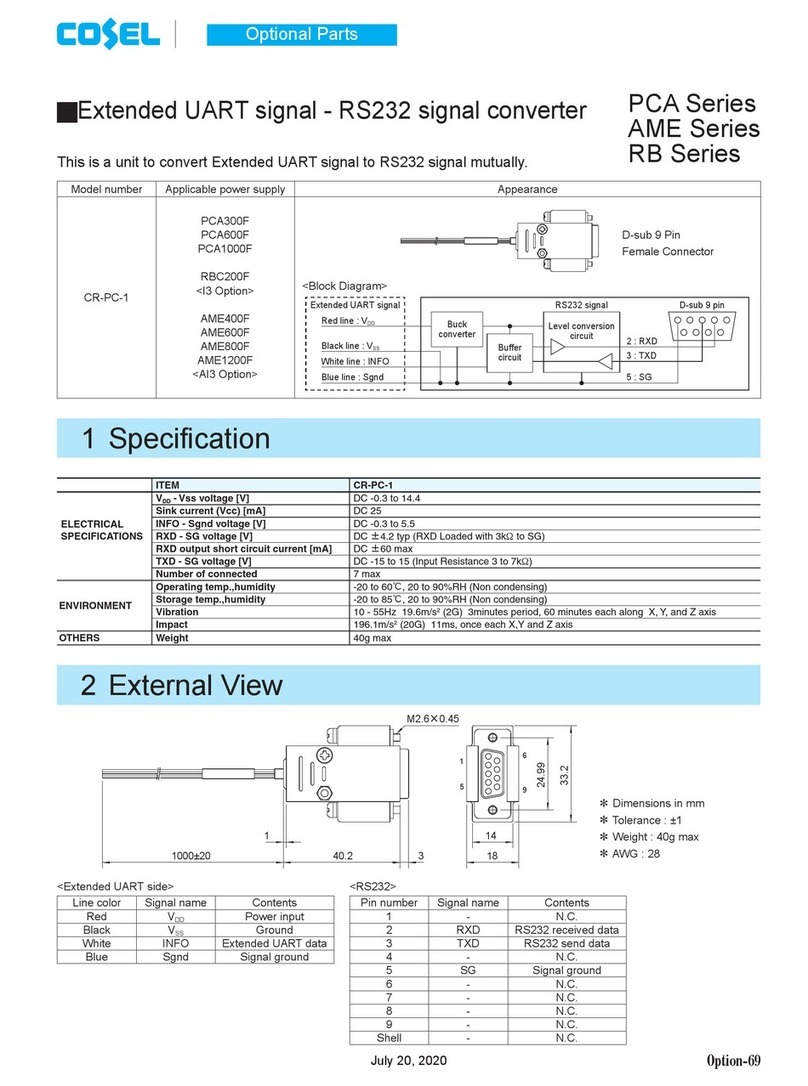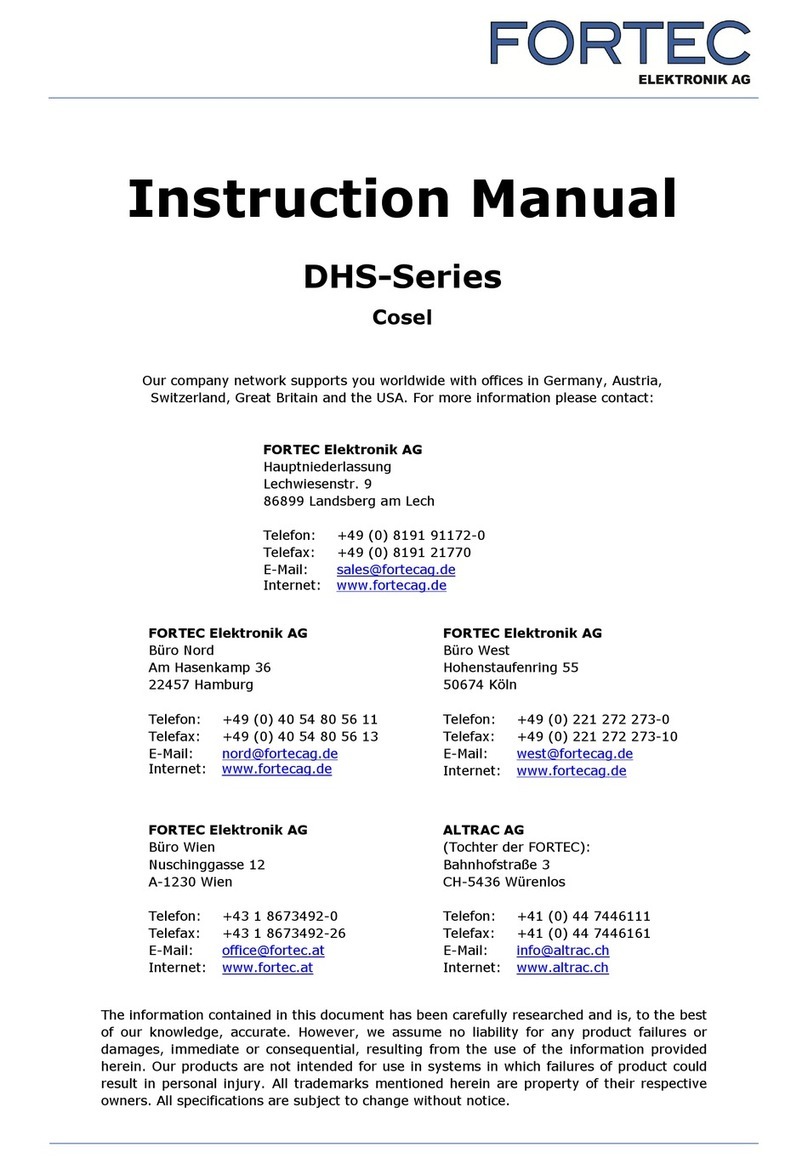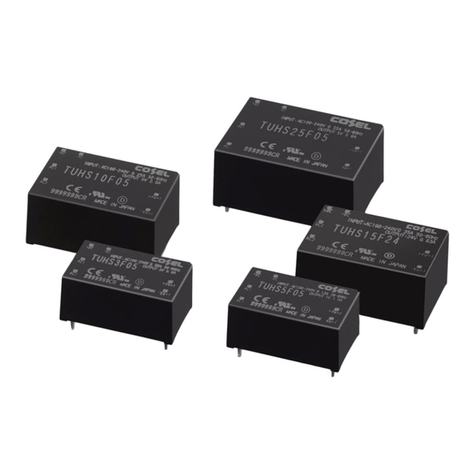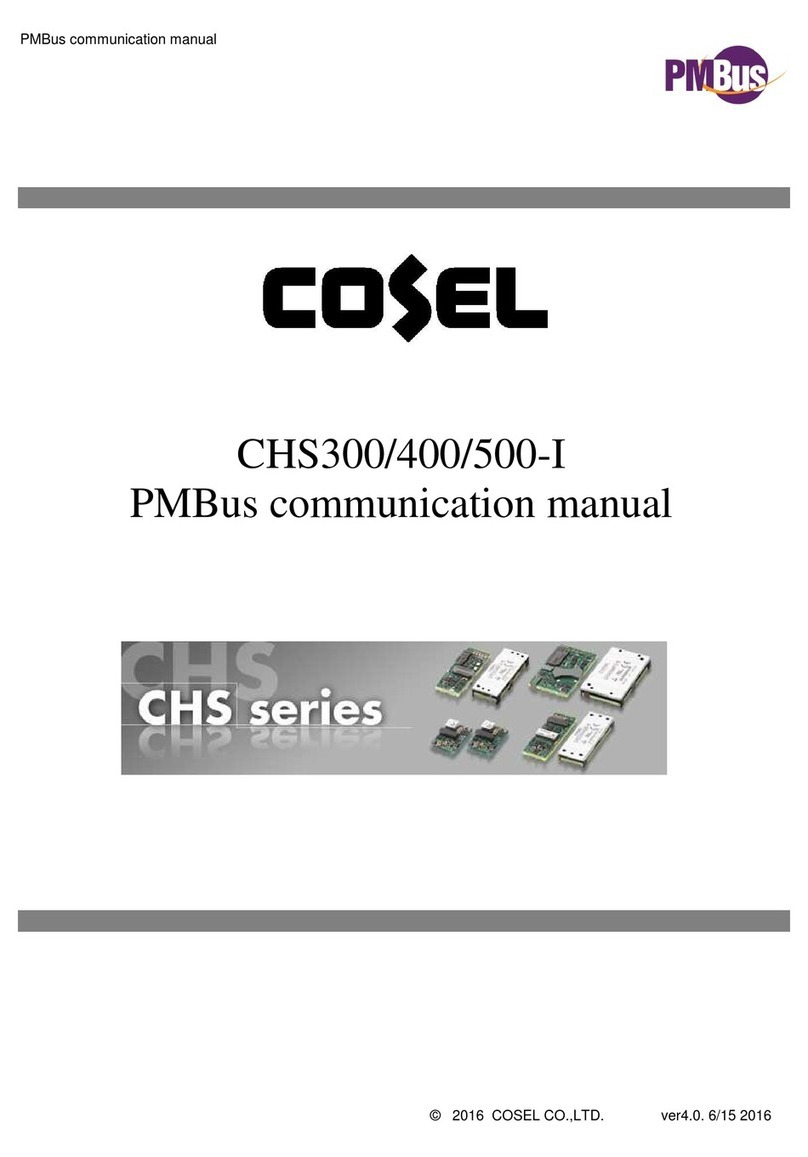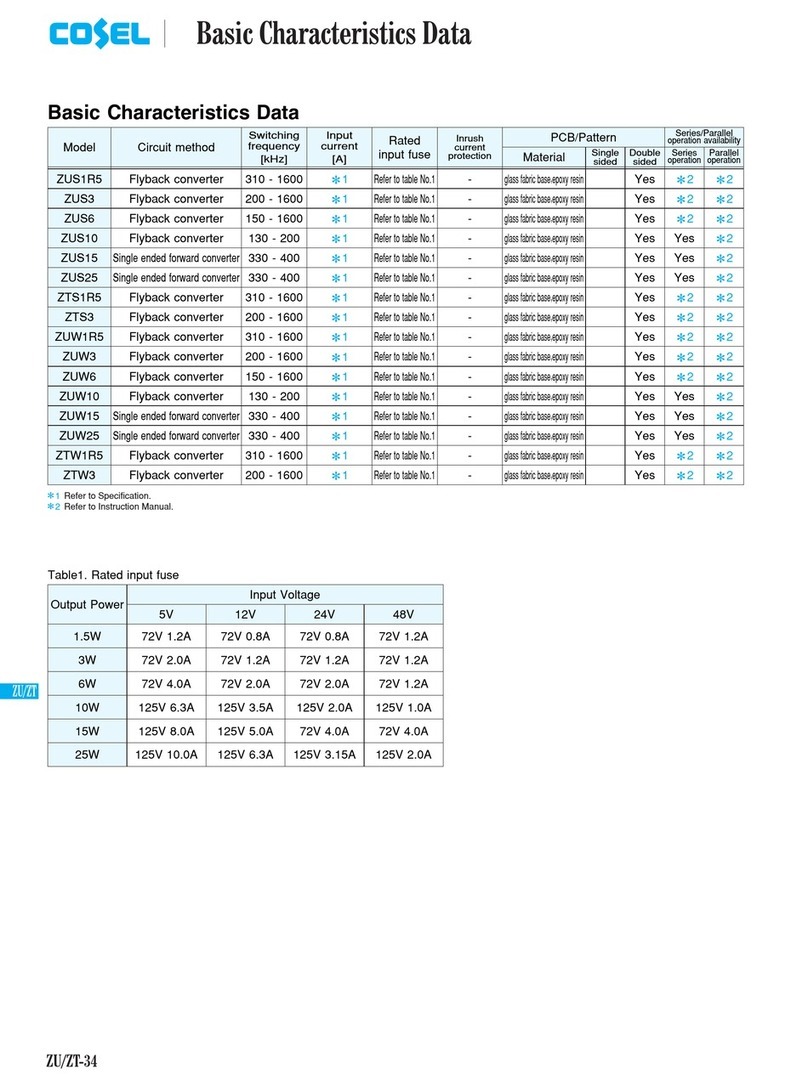
1Function
1.1 Input Voltage Range
¡If output voltage value doesn’t fall within specications, a unit may
not operate in accordance with specications and/or fail.
1.2 Overcurrent Protection
¡Overcurrent Operation
An overcurrent protection circuit is built-in and activated over
105% of the rated current or above. It prevents the unit from short
circuit and overcurrent. The output voltage of the power supply
will recover automatically if the fault causing over current is cor-
rected.
When the output voltage drops after OCP works, the power supply
enters a “hiccup mode” where it repeatedly turns on and off at a
certain frequency.
1.3 Overvoltage Protection (Excluding MG15)
¡Over Voltage Protection (OVP) is built in. When OVP works, out-
put voltage can be recovered by shutting down DC input for at
least one second or by turning off the remote control switch for
one second without shutting down the DC input. The recovery
time varies according to input voltage and input capacitance.
Remarks :
Note that devices inside the power supply may fail when a voltage
greater than the rated output voltage is applied from an external
power supply to the output terminal of the power supply. This
could happen in in-coming inspections that include OVP function
test or when voltage is applied from the load circuit.
1.4 Isolation
¡When you run a Hi-Pot test as receiving inspection, gradually
increase the voltage to start. When you shut down, decrease the
voltage gradually by using a dial. Please avoid a Hi-Pot tester with
a timer because, when the timer is turned ON or OFF, it may gen-
erate a voltage a few times higher than the applied voltage.
¡
Please note that if foreign matter such as flux during soldering
adheres to the vicinity of the case, the withstand voltage and iso-
latiion resistance may decrease.
1.5
Output Voltage Adjustment Range(MGS/MGFS Only)
¡The output voltage is adjustable through an external potentiom-
eter. Adjust only within the range of ±10% of the rated voltage.
¡To increase the output voltage, turn the potentiometer so that the
resistance value between 2 and 3 becomes small.
¡Please use a wire as short as possible to connect to the potenti-
ometer and connect it from the pin on the power supply side. Tem-
perature coefcient deteriorates when some types of resistors and
potentiometers are used. Please use the following types.
Resistor............
Potentiometer...
¡If output voltage adjustment is not required, open the TRM pin.
¡Output voltage adjustment may increase to overvoltage protection
activation range based on determined external resister values.
Resistor
R2
External
External VR
Resistor
R1
External
Output
TRM
-Vout
+Vout
3
1
2Load
Fig.1.1 Connecting External Devices
Table 1.1 List of External Devices
Item # Output Voltage
Constant of External Device [W]
(Adjustable within ±10%)
VR R1 R2
1 3.3V 1k 100 100
2 5V 1k 100 270
3 12V 5k 10k 1.5k
4 15V 5k 10k 1k
5 ±5V
6 ±12V
7 ±15V
1.6 Remote ON/ OFF
¡The remote ON/OFF function is incorporated in the input circuit
and operated with RC and -Vin. If positive logic control is re-
quired, order the power supply with “-R” option.
Table 1.2 Remote ON/OFF Specications (MG15/MG30)
Model ON/OFF
logic Between RC and -Vin Output
Voltage
Standard
Negative
Llebel (0 - 1.2V) or short ON
Hlebel (3 - 12V) or open OFF
Option-R
Positive
Llebel (0 - 1.2V) or short OFF
Hlebel (3 - 12V) or open ON
Table 1.3 Remote ON/OFF Specications (MG40/MG80)
Model ON/OFF
logic Between RC and -Vin Output
Voltage
MGFO
O05O
Standard Negative
L lebel (0 - 0.4V) or short ON
Hlebel (3 - 12V) or open OFF
Option-R Positive
Llebel (0 - 0.4V) or short OFF
Hlebel (3 - 12V) or open ON
MGFO
O24O/
MGFO
O48O
Standard Negative
Llebel (0 - 0.8V) or short ON
Hlebel (3 - 12V) or open OFF
Option-R Positive
Llebel (0 - 0.8V) or short OFF
Hlebel (3 - 12V) or open ON
¡When RC is at low level, a current of 0.5mA typ will follow out.
(MG15/MG30)
¡When RC is at low level, a current of 0.05mA typ will follow out.
(MG40/MG80)
¡When remote ON/OFF is not used, short RC and -Vin.
Metal Film Type, Temperature Coefficient of
±100ppm/Cor below
Cermet Type, Temperature Coefficient of
±300ppm/Cor below
DC-DC Converters PCB Mount Type
MG15, MG30, MG40, MG80 Instruction Manual
MG-81 October 21, 2020
